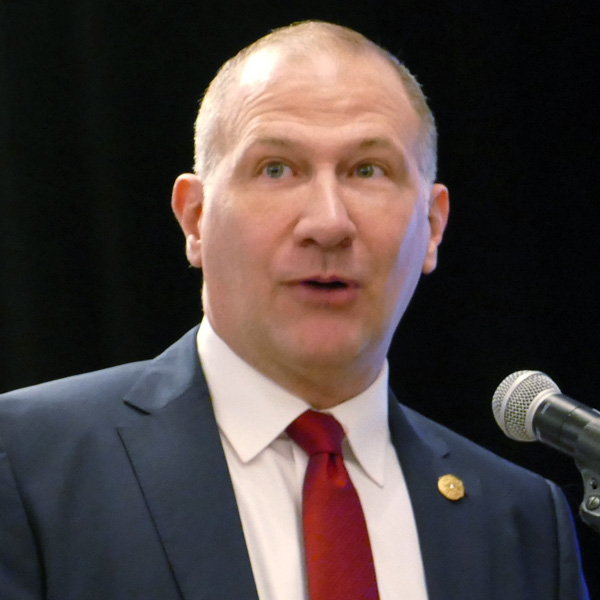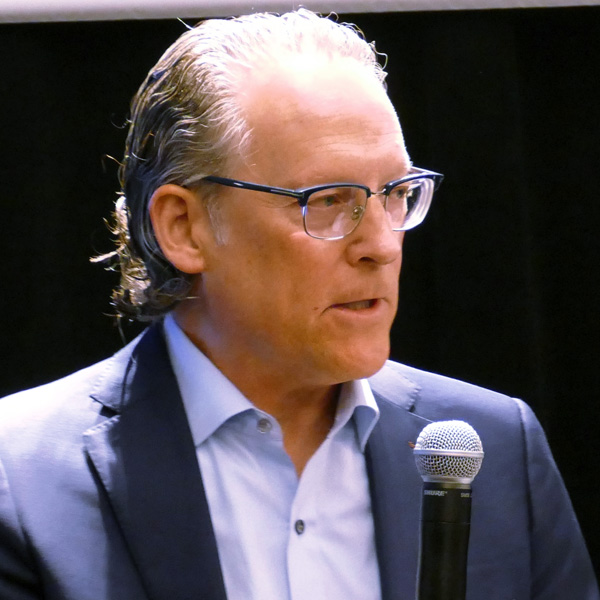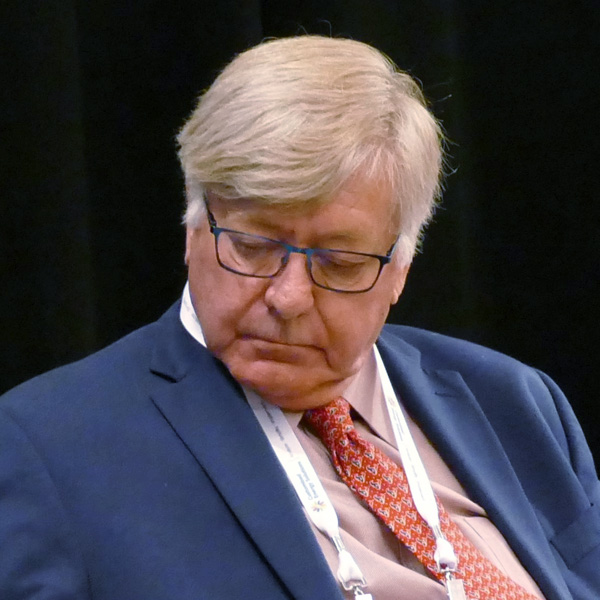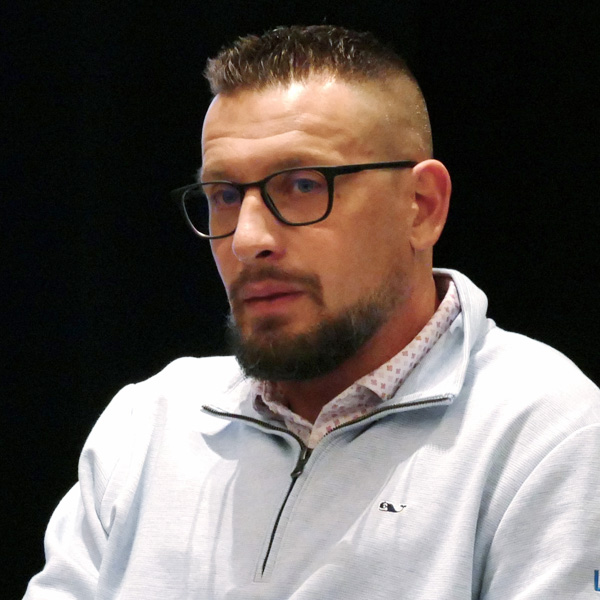
AUSTIN, Texas — Infocast offered attendees to its annual ERCOT Market Summit on Feb. 13-15 an “unparalleled deep dive” into impending changes still facing the Texas market and how they affect it.
Policymakers joined together with utility, renewable and trading executives to explore ERCOT’s future and examine the effects on resource adequacy, power prices and how to best meet the shifting needs of commercial, industrial and retail customers.
Coming as it did during the three-year anniversary of the 2021 winter storm that shut down thermal plants and natural gas facilities, leading to more than 20 GW of load shed and dayslong outages that devasted the state, speakers did not need much prodding to be reminded of what happened back then.
State Sen. Charles Schwertner (R), a leading voice on market design issues as chair of the powerful Senate Business and Commerce Committee that oversees electric market policies, said the Legislature’s work is not yet done.
“We have a responsibility to continuously assess the durability of the grid and potential deficiencies — the continual demands of our growing state — and update our policies to ensure our system adapts to ever changing conditions,” he said.
Schwertner cited recent comments from Texas Gov. Greg Abbott (R) that the state will need to grow its power supply by 15% a year to keep up with rising demand from industry and residential consumers.
“That’s a big number, 15%, and one that was not even considered a year ago,” he said. “Legislators must keep this in mind next session [in 2025] and be prepared to continue our work on powering Texas. We can confidently meet the projected demands of the state when we take an all-the-above approach to building our power portfolio.”
Much of the focus will be on resource adequacy and ERCOT’s potential movement away from market solutions to capacity shortfalls. A panel debating market design principles was asked whether the current design is sending the proper signals or whether investors remain concerned about regulatory uncertainty.
“Yes, all of the above,” responded Emily Jolly, associate general counsel for the Lower Colorado River Authority. “Fundamentally, I think there is a dispute about whether we do have a resource adequacy problem in ERCOT … and looking at the indicators of the viability of the forward market today and the amount of volatility that we’re seeing. But from our perspective, no question it’s a resource adequacy concern driven by market fundamentals that do not incentivize the types and quantities of generation that are needed to support the growth in Texas.”
“I completely agree with everything you just said,” R Street Institute’s Beth Garza told Jolly. “I think it’s relatively indisputable that the market is really not sending the price signals for resource adequacy.”
Garza, who was ERCOT’s market monitor until 2020, said the inaccurate price signals are the reason lawmakers created — and voters approved — the $10 billion Texas Energy Fund to incent more dispatchable generation, primarily gas-fired, and that state regulators and ERCOT are working on a performance credit mechanism (PCM) to restructure the current energy-only market. (See 2023 Elections Bring Billions for Texas Gas, Dem Wins in Virginia, NJ.)
“The question for us today is whether those steps are enough, whether the Texas Energy Fund is actually going to incentivize the kind of dispatchable generation that Texas needs,” Garza said, “whether the performance credit mechanism is going to incentivize the kind of reliability that ERCOT needs, and whether it’s going to provide the necessary funding for generators to conduct the kind of maintenances that are required to be able to provide energy during weather emergencies.”
E3’s Olson Defends PCM
Arne Olson, a senior partner at Energy and Environmental Economics (E3), found himself defending the firm’s PCM proposal from his fellow panelists.
The PCM is a market tool that would retroactively award incentive payments to dispatchable generation that meets performance criteria during the tightest grid periods. ERCOT and the Independent Market Monitor plan to produce a cost-benefit analysis on the PCM before next year’s legislative session. The mechanism had an early price tag of $500 million, but legislation last year set a $1 billion cap.
The cap “could limit its ability to perform the intended function, which is to stabilize revenues, particularly during a calm year. … That’s when you see the highest payments,” Olson said. “If the payments are lower than what it was, then the revenues are stabilized less. You have less market entry, and you have less reliability.”
“We all want reliability; we all want to improve sending the signals to resources; but we also want to balance the reliability benefit with the costs,” Shell Energy’s Resmi Surendran said. “The guardrail was put in based on a lot of debate and discussion … to say that annual net cost of PCM should not be more than $1 billion minus any of the benefits that are added to grid solutions.”
“One of the concerns I’ve had about some of the PCM is the interplay with the energy-only market. We don’t want to have 60% of the revenues coming out of PCM and 40% coming out of energy and ancillary services. That’s not a sustainable market,” Engie North America’s Bob Helton said. “So, as we design this, we’ve got to ensure that the PCM is the icing on the cake, and it is leveling out those revenues over a longer period of time and you save on investment. The rest gives you the flexibility and what types of generation you need.”
Helton said another of his concerns is dependent on the penalties for nonperformance during critical scarcity hours.
“You could create a situation where you overbuild the system and increase the cost of that just due to administrative penalties and not just because of some reliability issues,” he said.
Olson reminded the panel that the PCM’s primary purpose is revenue stability.
“It’s meant to address the boom-bust cycle, so when there’s a couple of blowout years, we’ll measure investments,” he said. If the “system is overbuilt and nothing happens for 10 years — the margins are low — then people start to exit the market. … It’s a residual market. It’s going to be based on the net cost of capacity, not zero cost, and so if someone has a blowout year, the PCM payments are going to be low. When it’s a calm year, that’s when the PCM payments will be higher.
“That’s how it increases revenue stability year over year with dispatchable generators and as a result of increased revenue stability. Carrying the cost of financing those resources should go down,” he added.
Noting other markets will continue to have boom-bust cycles, Jupiter Power’s Caitlin Smith said, “You can’t have one market that is completely stable and the inputs and outputs are boom-bust. I think that’s just the nature of markets.”
“We’re all looking at the same thing, and that’s, how do you operate and incent investment in a zero-marginal cost world?” Helton said. “It’s not going to be just the PCM. The PCM is a bridge to help us get there. We’ve got a lot of sausage-making, and we don’t know how good this is going to be.”
AC Link to National Grid Unlikely
News broke during the summit’s second day that U.S. Reps. Greg Casar (D-Texas) and Alexandria Ocasio-Cortez (D-N.Y.) had filed the Connect the Grid Act, mandating interconnections between ERCOT and its neighboring grids.
The legislation would direct ERCOT to build between 2.6 and 4.3 GW of capacity with MISO, SPP and the Western Interconnection. It would also give FERC oversight over pricing and transmission planning in ERCOT, a concept long considered anathema by Texas lawmakers and the market’s participants.
“I think it’s been discussed many times that we don’t want good connections because we don’t want FERC coming and telling us how to manage things,” Schwertner said during his opening keynote. “I don’t think we could have passed [legislation] in Texas these last three years, ensuring as robust response to those weather events, if we had Mother Federal Government telling us what to do. So, no, I don’t think it’s going to happen. I don’t really know how much of a reliability improvement it would be, quite frankly.”
A day later, Schwertner was more direct: “Not going to happen!” he posted on X.
Texas does have several smaller DC ties with SPP and MISO. Pattern Energy’s Southern Spirit, a 400-mile, 345-kV DC link into the SERC Reliability region, gained regulatory approval in 2022 after seven years of review. Because no ERCOT electrons will be mingled with other grids, the project will not bring Texas under FERC jurisdiction. (See “SCT Proceeding Closed,” Texas Public Utility Commission Briefs: Sept. 29, 2022.)
“AC ties are never going to happen. Too hard, too expensive,” Garza said. “DC, on the other hand, we’re missing out on.”
“I think it’s an incredibly unlikely idea that will never come to fruition, if for no other reason than creating that level of AC inter-tie to [other regions] invites far more FERC oversight than ERCOT wants,” Jolly said.
Panelist: ‘Bigger, Faster, More Tx’
Matt Pawlowski, vice president of development for NextEra Energy Transmission, had a quick response when asked how ERCOT can plan to ensure it has enough transmission to support oil and gas growth in the Permian Basin.
“Bigger, faster; make more transmission available. I mean, that’s the answer, right?” he said. “You’ve got to plan for it. It’s going to take seven or eight years to build transmission. This is an issue in every single region around the country. Plan for the build because the generation is coming; the transition is coming. You’ve got to get faster on planning; you’ve got to issue [notifications to construct] faster to build that transmission.”
Pawlowski’s mindset is driven in part by his experience lobbying politicians on Capitol Hill. He related an experience with three senior U.S. senators who were unable to distinguish between electric transmission and transmission systems in vehicles.
“Most of the time, I used to get laughed out of the room. People say, ‘Oh, he’s talking about that stuff. It’s really hard. It’s really expensive. We don’t need it anymore; everything’s fine,’” he said. “Now, all the questions that I hear is, ‘Can you do it faster, better, bigger?’
“I think it speaks to all the changes that are going on,” Pawlowski added. “There’s a lot of policy changes, a lot of things that we need to do, but you know, transmission is really at the forefront of what we’re hearing from our customers, from our regulators, from policymakers, from everybody all around. So, it’s an exciting time to be in the transmission space.”







